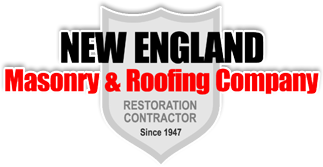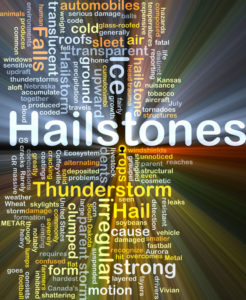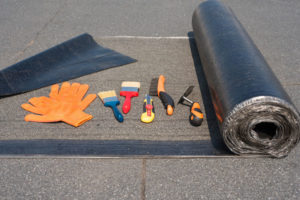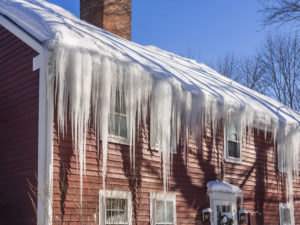Category: Uncategorized
Your Guide to Commercial Roof Solutions
If you are currently in the process of erecting a new commercial building and you are looking for the right roofing solution, here are the most popular types of commercial roofs:
- EPDM roofing – also known as rubber roofs, EPDM systems are among the easiest-to-install and most durable commercial roofing systems. EPDM roofs are also easy to maintain and very resistant to any kind of weather;
- Thermoplastic roofs – these systems are resistant to extremely high and extremely low temperatures, to UV radiations and to chemical exposure and they can resist hail and fire as well;
- Built-up roofs – these systems are built from alternated layers of tar or modified bitumen and mineral granules or gravel. They are cheap and durable solutions, but they are somewhat difficult to maintain because the topmost layer of these roofs is gravel or granule;
- Metal roofs – one of the most common and most traditional types of commercial roofing, metal roofs are durable, strong and affordable, but they require regular maintenance to be able to perform properly;
- Green roofs – this modern, eco-friendly roofing solution is becoming increasingly popular these days. Green roofs are partially or completely covered in vegetation and are fitted with special watering and draining systems for ensuring the right environment for the plants. The solution is not cheap and it requires quite a lot of maintenance, but it improves the quality of the air both inside and around the building. Look for a commercial roofing Connecticut company that can provide samples and estimates.
Repairing Storm Damage to Your Masonry
Masonry structures are strong and durable, but even so, they can be damaged by storms, especially if they are associated with hail, too. Whether the recent storm has damaged your brick wall, your brick chimney, your masonry barbeque, the stone-lined flowerbeds in your garden or your masonry pathway, don’t worry, masonry structures can be repaired relatively easily, here is how:
- Replacing bricks in walls – remove the caulk around the brick that needs to be replaced, remove the damaged brick gently hitting it with a hammer, apply some new caulk around the hole, then place in the new brick and remove any excess caulk;
- Fixing small or medium cracks – you will need to prepare some concrete paste mixing powdered concrete available in home improvement stores and water. Apply the paste on the crack, wait until it hardens completely, then you can restore the appearance of the repaired part with some paint and dexterity. For best results call masonry restoration Connecticut professionals with experience;
- Fixing chips – concrete paste is what you need for these repairs, too. The process is essentially the same as in the case of cracks – use the paste to restore the shape of the brick or of the stone, then wait for the repaired section to dry and then paint it to restore its appearance, too.
Best Materials For Commercial Roofs
Nowadays, manufacturers of roofing materials offer a long-dependable choice of products for flat roofs. Since most commercial roofs fall into this category, we are going to offer you more details about some of the best materials for them, and then, of course, you can ask a Connecticut commercial roofing professional advice as well.
Standing seam roofing
Standing seam roofing refers to metal roofing systems for flat or low-pitched roofs. Nowadays, most of them are made from corrugated galvanized steel coated with zinc. Other metals used in commercial roofing applications include aluminum, copper, tin and stainless steel.
Metal roofing comes with many benefits that make it one of the best choices: durability, longevity, resistance in any weather conditions, resistance to impact and fire, low operating costs and reflectivity.
BUR systems (build up roofing)
These roofing options are composed by asphalt (bitumen) and felts reinforced with glass-fiber or organic mats. This combination of layers creates a durable roofing membrane, very redundant and providing immediate protection. BUR systems are resistant to stress, thermal shock, punctures and provide superior fire resistance.
Mod Bit systems (modified bitumen)
These are made from modified asphalt (asphalt combined with a plastic or rubber ingredient), which provides increased flexibility, strength and stability. Modified bitumen membranes are installed as multi-ply systems, using different methods that ensure their excellent waterproofing property.
Do Commercial Buildings Have Gutters?
We cannot possibly know if all commercial buildings have gutters, but one thing is sure: commercial buildings need gutters, just like residential buildings. Without them, water will flow down along the walls, damaging their structure, the siding materials, causing discoloration and altering the overall aspect of the building. This would be quite bad for a commercial building, which relies on creating a positive first impression to clients and customers.
Most business owners are aware of the benefits offered by a roof drainage system; as such, gutters can be seen in commercial buildings, just like in residential buildings. However, they are a bit different.
First, in the case of commercial properties, building code requirements are a bit more stringent and may affect the type of material gutters are made from, as well as their design. On the other hand, commercial properties have different needs compared to residential properties. The most popular material for home gutters is vinyl, but it is typically too feeble for the needs of a commercial building. Commercial gutters are made in aluminum and steel, and their capacity is higher than the standard 5-inch gutter used on most residential buildings.
Considering their size, commercial gutters should be protected with guards designed to keep away most of the debris, call on the professionals at http://www.nemasonry.com/new-england-roofing for installation pricing and services.
How To Tell If There’s Too Much Snow On Your Roof
One of the most demanding (but realistic!) evaluations of a roof is related to its resistance to snow buildup, because in this context happens everything that may affect a roof during the cold season, from the weight of the deposited snow layer, to wind, low temperatures, ice formation and so on. In these harsh meteorological conditions, one can best identify the soft areas of a roof, vulnerabilities that can make the roof break, as well as its potentially existent problems.
This subject of snow buildup is often debated from the perspective of both the roof coating material and its structure. Many manufacturers of lightweight roofs claim that the low weight translates into a less expensive hinge. However, this apparently correct logic does not apply in a climate with massive and periodic snowfall. In this case, the structure of the roof must be thoroughly consolidated, taking into account the maximum values that precipitations can reach.
Snow deposits can be uniform on the roof`s surface, when the wind is absent or has low speeds (less than 2 m / s). When the wind exceeds 4 m / s, the snow is shattered and accumulates in obstructed or sheltered areas of the roof – and this situation may become critical.
Heavy snowfall in a very short time is also very dangerous for a roof, because the weight of the snow is bigger than you would expect and can overload the roof, which may sag or collapse. In these situations, immediately call on New England Masonry and Restoration of Connecticut to have the professionals clear the now from your home’s roof.






















